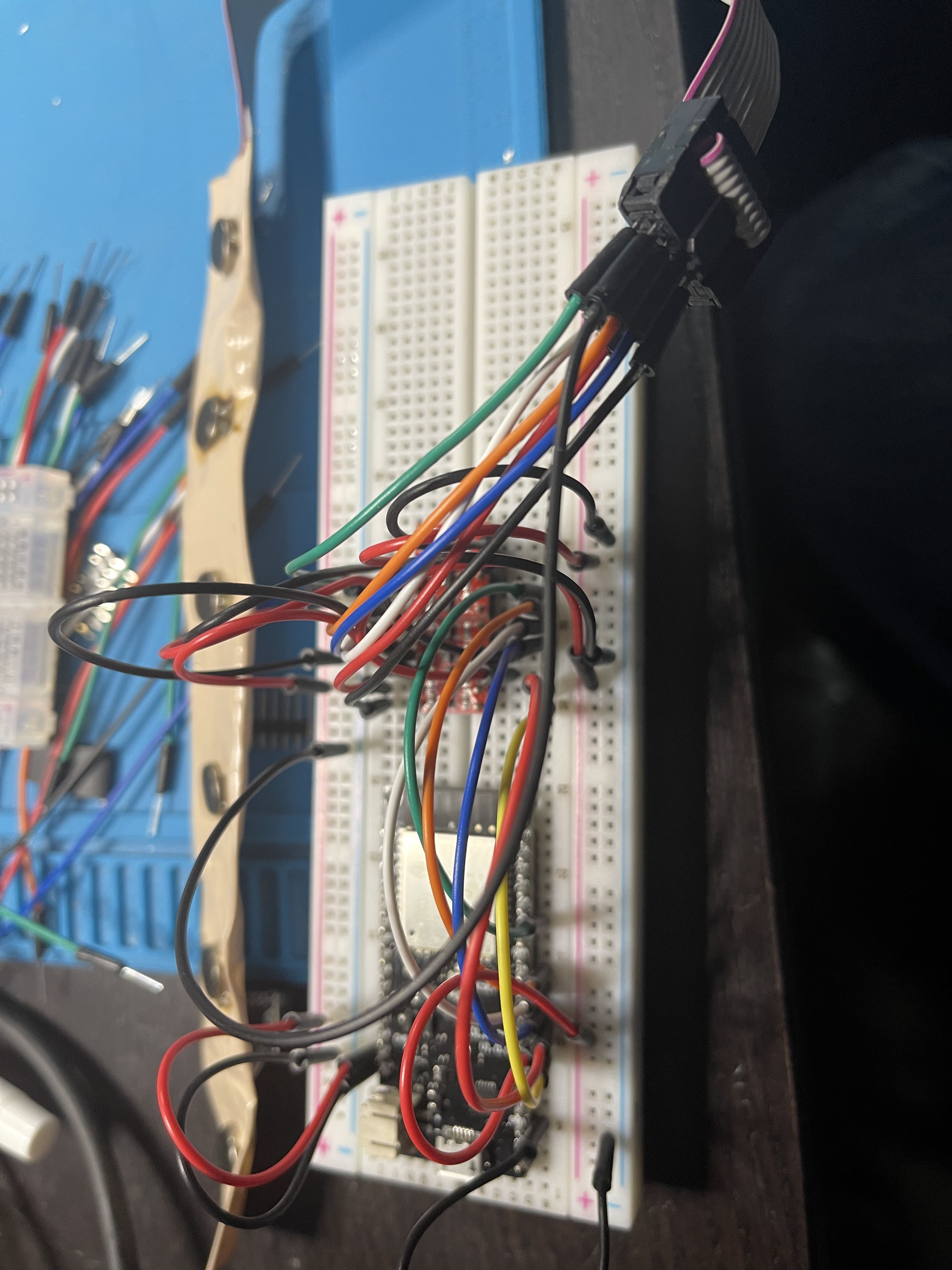With the duct tape prototype in hand, it was time to activate the haptic devices and see what sensation we could work with. I had used the LOLIN32 boards for several WS2811 based lighting projects and had a few with headers installed and ready for the breadboard.
The ESP-WROOM 32 on the LOLIN board can only provide about 12mA max per pin, and should be limited to 9mA, which falls below the results of the current survey. I added a series of 3.3v to 5v level shifters to the circuit to manage the per pin current as well as step up the voltage for better activation of the devices.

As the spacing of the haptic devices is more or less arbitrary, I decided to generate both a single device progressive, single device random and wave pattern to get a feeling of what kind of feedback these devices can generate. I strapped the device to the inside of my forearm and began sending the signals.
Each device is driven with a PWM signal from the LOLIN32, with a range of 0-255.
Running each individually at 125 for 5 seconds each I am able to notice the progression up the device. Now things got interesting, with the exception of Device 1 and 6 on the edges, when activated randomly the best I could identify was a low (device 2/3), middle (device 3/4), and upper (device 4/5) sections.
I generated a wave pattern from 0 to 255 and back to 0, with each device being 42 steps out of phase with the previous device. This created a rolling triangle wave up the devices. While running this pattern I could not identify the location of the wave at all. I made several attempts at adjusting the speed of the wave but once all the devices were active, I could not distinguish any real pattern.
The lack of data clarity may be due to several factors. One factor may be due to the vibrations propagating through the duct tape structure. Another factor may be with the sensory capabilities of the inside of the forearm, it isn't an area with an abundance of touch receptors, resulting in a lower fidelity. The last factor may be a lack of familiarity with data input from that region of the body.
Discussions
Become a Hackaday.io Member
Create an account to leave a comment. Already have an account? Log In.